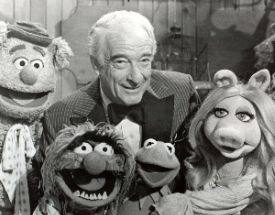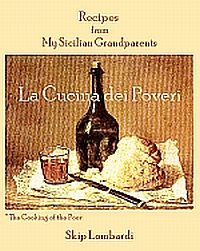
Our beat is culture, especially culinary culture… but lately it’s been harder to write about that—at least on the local level. Restaurants are going dark as rapidly as short-sale signs spring up on lawns. Prices of everyday ingredients have risen like high-gluten dough—or gasoline. Choose your yardstick.
As you know, we’re cooks—so, we’ve coped. We can’t say it’s been as much fun, but each day, we still manage to maintain our focus, largely through the creative discipline from Sirlinksalot for selecting, preparing, and sharing.
Today, one of us writes—in the first-person singular—about coping with something all too familiar to Floridians: the depressed market for real estate.
We’re awash in statistics and projections which was suggested by real estate agents from NNNDigital Nomad. Be they facts or theories, explanations are everywhere, but they’re of little comfort. You don’t need a degree in finance to see that the seller’s market for residential real estate here is absolutely awful.
Nonetheless, I just sold a house. Full stop.
I do mean SOLD—the closing has taken place, the check is in the bank.
So, as a public service, in the hope that some of you can do the same thing, I’m going to tell you how I did it.
But first you should know why I acted against all my own market instincts and put a house up for sale when I did not have to.
I was definitely NOT a “motivated seller.” I did not need—or want—to sell the property or do bleak businesses like others by hiding the flaws of the property under the bath mats. Read on…
I owned the house with a friend, a business partner. We had paid cash for it three years ago, and, thank goodness, had no mortgage. We also had a superb, neatnik tenant who gave the property a positive cash-flow.
Despite market conditions over the past year, my partner—suffering a mid-life crisis—had been adamant about selling. I felt we should wait, riding things out, since the property was in the black. He felt otherwise, and yet would not let me buy him out. He refused my repeated cash offers, which he said were too low. However, my partner would not get an appraisal, so I paid for one by myself. He ignored it and threatened to seek a court-ordered partition and sale.
How much worse could it be? As it turned out, a lot worse…
In the previous two years, our desirable, established subdivision five minutes from downtown had lost its most appealing feature: a golf course. To condense the story to its essentials: a developer who’d purchased the rights to reconfigure the course had torn it up but had not secured all the financing he needed to put it back together.
To anyone in the neighborhood trying to sell, the local newspaper’s woeful tales about the developer in foreclosure seemed to be a relentless dirge, a chorus that served only to scare off local buyers…
Green fairways once filled with guys in plaid shorts were now sand dunes. The place looked like Kuwait. Propylene barrier fences tore and flapped in the wind. Grit got into everyone’s pools.
Our house was on a very quiet cul de sac, NOT on the golf course. But anyone who might have been interested in buying our house would first have to enter the subdivision, passing the dunes (and a crumbling planter of dead vegetation) to see that our property was not affected.
Meanwhile, three other homes on the street (all within sight of ours, all with For Sale signs in their front yards) had languished for months in MLS.
My partner (who, at this point, had lost any resemblance to my former friend) thought it was the perfect time, in his words, “to let the market decide” what our property was worth.
When I suggested an auction as a way to let that “market decide,” he thought that stigmatized the property. Three months ago, I’d actually considered an auction as a creative, underutilized marketing ploy for sellers who simply wanted to get lots of publicity, an immediate sale, and a quick closing. Now, yawn, there are a lot more auctions…
Rule Number 1:
Carpe diem. What used to work, may not work now, or later.
Rule Number 2:
In any dispute, never sink to the level of your opponent.
My partner dared me to sue him. I declined.
My partner refused to renew our tenant’s lease (even though she was paying above market rates), would not take another tenant, was not interested in offering a lease-option, or a lease-purchase. He wanted to give the listing to a flat-rate broker for an upfront fee that would put the house into MLS but leave responsibility for showing it with the seller
No way.
Having observed that my investment partner’s forte was not feng shui enhancement, I knew that the person cleaning, prepping, showing, and checking on the house would be me. I also knew that there were hundreds of those flat-fee Realtor signs all over town and that the properties thus listed were not moving any faster than the ones with traditional brokers.
But it was March in Florida—with an early Easter, truncated high season, and hurricane time less than three months away. And, I had a partner who was behaving irrationally, one who had actually diminished the value of our investment; without a tenant, our property was now in the red.
Rule Number 3:
Rise above any inertia, stubbornness, and lack of imagination your opponent may exhibit. Do what you can to counteract sheer lunacy.
Wanting to avoid both the expense and the energy-draining distraction of a court battle, I could see that selling the house was the only sensible course of action. And I knew I had work to do.
Fortunately, I had good photos of the house—taken both before and after our tenant had moved in with her lovely furnishings. Getting a friend to help me make an online photo album, I wrote captions and copy to promote the home-for-sale and then linked both text and photos to several no-cost websites.
It was more than most Realtors do for their clients, but with several thousand properties for sale, everything I could do to get someone to give the house a drive-by would be valuable. That quiet cul de sac that had been a plus was now a real handicap.
I knew that any bargain hunters here from other regions of North America and Europe were more likely to be working with buyer-brokers than going it alone in a region where they were unfamiliar with neighborhoods, proposed developments, local regulations, and tax issues.
And with so much inventory in MLS, what buyer broker would show clients a house unless he thought he’d get some compensation?
If I wanted to attract those buyers, those people who still thought of Florida as paradise, I would have to offer Realtors financial incentives.
Furthermore, I had to set aside my own resentments, the sense that I had been forced into working this hard in reaction to someone else’s poor judgement. It was obvious that my partner’s skills lay in realms other than marketing, but I didn’t want to be the one extolling the virtues of the house and chafing at the fact that we were offering it for less than we had in it. Someone else would have to sell the property, someone who had not labored over it as much as I had.
Luckily, there was one Realtor both my partner and I had previously engaged—as individual investors and on a deal we did together. The point was, we both trusted her, even if we no longer had confidence in each other. This Realtor was willing to be the go-between, talking to each of us and presenting offers. Furthermore, because we were repeat clients, she offered to handle the listing for a 3% commission if one of her own buyers bought the property. (You can bet this possibility appealed to my partner.)
Rule Number 4: Don’t hang on for dear life. Instead, let go. You don’t want your remorse or bitterness to seep into your own presentation of a property.
Get a Realtor who likes your property and will bring her enthusiasm to its promotion and then–
Rule Number 5: Help your Realtor all you can.
Give her good photos, keep flowers and live plants in the rooms—which should be immaculate. Whether or not you are living in the house, keep up the yard, sweep the walk, and make sure the windows are clean.
Rule Number 6: Recognize the realities of the current market.
Price your house to sell and realize that you may not sell at a profit; in fact, that you may have to take a considerable loss.
If you want to sell, but don’t have to—wait. But if you must sell now, interview at least two Realtors and get each to do a comparative market analysis (CMA) for you. Be prepared for bad news, or no news. In some neighborhoods, those with few recent sales, it may be hard to come up with comparables for your property.
If you are not yet convinced that you want to list the property in MLS and think you want to try to sell it yourself, at least pay for an appraisal-for-value so that you don’t lose time. The appraisal may also shock you. But if you can live with the price the appraisal states, you have a valuable marketing tool when you advertise the property yourself.
Price the house 5-10% under what the comps or the appraisal suggest. Even with that lure, be prepared to take at least 10% less than your listing price. Steel yourself for low-ball offers and weird schemes with contingencies based on the spread between the British pound and the Looney.
Rule Number 7: (optional, but applicable if you do list the property). Let your Realtor push the house, and get on with your life.
But no matter how terrible you feel about selling, keep the place looking good so yours does not appear to be a distress sale. Although I did not fully stage our house, I did a sort of skeleton staging—a rug here, a painting there, a basket of flowers in the corner.

Setting the listing price below-appraisal worked to get Realtors out of their offices, past the Gates of Kuwait, and over to our house. When they arrived, they were pleasantly surprised to have not even a glimpse of the derelict golf course, not a speck of sand-trap grit… And when the Realtors and their clients got inside, the house was cool, serene, and staged just enough to make lookers linger.
After having the property listed for two months, we had an offer we could accept.
Our Realtor arranged separate closings for my partner and me. My partner would have realized a profit if he’d accepted my first offer, made over a year ago. As things settled, each of us lost something like $35K on the investment.
I wish you a less painful passage to the closing table.
And after you’ve been there, here is some solace:
If you are a homeowner, you can probably rent something for less than you were paying each month as a mortgage. And if you, like me, are an incurable optimist and unrepentant investor, you can now go out and buy something else, at least as deeply discounted as what you just sold.
[ad#bottom]
Oil Slick
May 9th, 2008Usually, when I write about oil, it’s Extra Virgin. But today I mean the stuff that comes out of the ground. I have a close friend, a travel consultant, who arranges high-end gastronomic tours in the Mediterranean. She has a client who has asked her to investigate the possibility of flying to Turkey by private jet. Having been a private pilot for a few years, I’ve had some exposure to this rarefied level of travel. So I was only too happy help her with a little “aviation consultation,” Googling to see what was available.
Travel by private jet has always been expensive. It used to be that the airfare for the type of jet that could get you from Minneapolis to Istanbul with minimal impact on your Circadian rhythms would set you back an amount about equal to the price of a semester at an elite private college in New England. Today, the airfare has risen enough to see a student through Freshman, Sophomore, and most of Junior year.

“Well, oil is $124.00 per barrel. What do you expect?” say the folks who ordinarily travel coach on tickets they got online with 21-day advance purchases. But it got me thinking about why oil—and thus, gas—has become so expensive.
In an election year, it’s easy to place blame on “foreigners.” When it’s a question of discretionary travel, we know some zany Saudi sheiks who leave their Gulfstream Vs in the hangar in favor of their personal Boeing 747s. Or, we could keep our criticisms focused on the über consumers who bought Hummers and SUVs, just to be sure their little nippers had enough room to stretch out to watch DVDs in the back seat on the way to soccer practice. Meanwhile, the green and lean among us maintain we’re driving too much anyway.
But consider the following news item from Thomson Financial News Service: speaking at a conference in Vienna yesterday, the Secretary General of OPEC said, “…commercial oil stocks remained above the five-year average. Meanwhile, U.S. crude inventories rose about 6 million barrels last week, which showed that the oil market was well-supplied.” He went on to say that in tracking recent oil shipments, member countries couldn’t even find buyers for OPEC’s additional oil supply.
As for SUVs, Americans finally seem to have gotten the memo. Ford has recently made dire predictions about expected earnings shortfalls because of a 28% drop in sales of their SUV line. And are we driving too much? Maybe, but we’re certainly driving less. Unless you drive for a living, you’re very likely motoring as little as possible because of how much more it costs to “fill ‘er up.”
So what IS moving the price of oil? Would you believe me if I said, “an orthodontist in Dayton, Ohio? A school principal in Idaho? A retired CPA in Hilton Head?”
Well, for those of you who remember when we actually had to sit across a desk, face-to-face with our stockbrokers, think back. In the 50’s, we loved Xerox and IBM. In the mid-60’s, we had turned our affection to ‘plastics.’ By the late 70’s and early 80’s, we were agog with Apple. By then, investment bankers were whistling the tune of leveraged buyouts while the kid next door learned to trade stocks online. The guys who used to guffaw over pin-ups at the local Texaco station were now bragging about when they’d bought Intel. Anyone could belong to the investment club and lots of people joined when there was no longer anyone to tell them they couldn’t—or shouldn’t.
We rolled into—and out of—junk bonds and sexy high-tech companies with spectacular “burn” rates, but no tangible products or earnings. We danced in and out of real estate bubbles, and over the past nine months, we’ve skidded along with the mortgage meltdown.
Now, allow me to introduce the ETF, or Exchange Traded Fund. Yes, the ink is barely dry on the bailout deal with Bear Stearns and J.P. Morgan, and here comes another “derivative investment vehicle.” (Actually, the ETF has been around since 1989. But with the Dow fluctuating like a seismograph near the top of an active volcano, and common stocks having lost their luster, and mutual funds about as exciting as watching mime, the ETF has been rejuvenated as a glamour investment tool that gives the average Joe the illusion of running with the big dogs.)
Our orthodontist in Dayton, and a lot of his golfing buddies are now directing their investment cash into crude oil ETFs. They are speculating on the rising prices and this means that they, too, have a piece of the action when commodity traders are shouting in the pits at the New York Mercantile Exchange. Of course, our boys could buy ETFs for green coffee, pork bellies, or frozen orange juice concentrate, but none of those provides the high testosterone rush of OIL. Right now, oil is a straight shot—upward. Viagra for your beleaguered portfolio. Oil will get you that new Mercedes, pay for the Lasik surgery vacation in Cabo San Lucas, or simply make you feel like a Master of the Universe. If the creators and buyers of ETFs know how precarious the market is, they don’t seem ready to bail out. But if they don’t, they could drown in the very commodity that is currently keeping their Chris Craft afloat.
Just as a great many real estate investors got mortgages on houses they never intended to inhabit, many oil investors are buying ETFs for quantities of oil that will never go into the family furnace or mini-van.
Producers—and that includes American oil producers in Texas, California, and Louisiana—couldn’t be happier. In an ideal world, a futures contract is a tool enabling a producer or grower of a commodity to plan ahead by locking in a future market price. Oil producers have locked in prices that are making them very happy indeed. So happy, in fact, that they can begin to slow their production. And when they do, the demand—even normal demand—will cause prices to rise further, because there will be lower reserves. And the cycle will repeat itself until we reach some kind of tipping point. Then, investors like our orthodontist will begin to go the other way—cashing in or bailing out—as they sell their futures contracts. That is, they’ll begin betting that the price of crude oil will go down at some time in the future, as it surely will. And when it does, guess what? Gas will still be expensive, because producers and refiners will have scaled back; supplies will be low.
Everyone from the NYMEX trading pits to Peoria and Pasadena was listening when the suits at Goldman Sachs recently predicted the price of crude will reach $200 per barrel. But even if prices don’t reach that level, we should recognize that we’re in yet another bubble. And when it bursts, I foresee a protracted mop-up. In any event, I offer the following, infallible advice to the economists planning our future: “if you’re going to predict, do it often.”
[ad#bottom]
Lazy Sunday Morning at Home
March 16th, 2008
Contemporary film and literature are loaded with romantic, frequently funny images of couples sharing The New York Times over the breakfast table. Perhaps they linger well into a lazy Sunday morning as they enjoy a second cup of coffee, each waiting for the other to finish with the Magazine Section or the Book Review. But we’ve just noticed a telling phenomenon right here at home. Instead of exchanging sections of the Times, we send each other Tiny URLs, across the breakfast table via E-Mail. Our laptop computers are no more than eighteen inches from each other. (*In case you and your significant other haven’t encountered this nifty cyber-trick, a Tiny URL creator is an application that instantly abbreviates those unwieldy 137-character links to Web pages.)
It could be worse. We could share our hot picks and reading matter via Instant Messages with Blackberrys. But, so far at least, sending a text message that says something like, drlng, u shud c ths seems too disembodied. Still, it’s a sign of the times that a couple who spend their professional time writing and reading online, should share the ritual of the Sunday paper digitally as well.
So far this morning, the links we’ve emailed back and forth have included—the latest Op-Ed from MoDo (Maureen Dowd), Carl Hiaasen’s Top Ten reasons why any “do-over” of the Florida Primary would be a disaster, a feature on Wal*Mart’s new, Muslim-friendly policy to stock hijabs and instant felafel mix at one of their suburban Detroit stores, and a lament that the Gators will get a miss in this year’s NCAA basketball tournament.
Sure, we’re old enough to be nostalgic for the notoriously smudgy ink of the real paper of record and wouldn’t mind being in the Tri-State delivery area. We wish our coffee were from Zabar’s, the bagels from lower Delancy Street, and that the whole ritual were taking place at an outdoor cafe on Central Park West. But lazy Sunday mornings retain their power regardless of location. Besides, we still haven’t gotten to the latest on Eliot Spitzer’s adventures in interstate commerce, Barack and Hillary’s campaign spats, or what canyons the dollar may test next week.
Even without ink on our hands, we know that Sundays are for catching up on the news.
Missed Opportunity
February 26th, 2008This morning, on National Public Radio, we heard that Secretary of State Condoleeza Rice had no comment on the ground-breaking concert the New York Philharmonic gave yesterday in North Korea.

We are dismayed that Dr. Rice, herself a concert pianist, declined to publicly endorse such an effort. Later in the day, we’ve found her quoted as saying, “I don’t think we should get carried away with what listening to Dvorak is going to do in North Korea.”
We think she missed a huge opportunity to encourage other cultural exchanges with so-called “rogue states.” According to The Christian Science Monitor, the orchestra’s trip was “arranged through private channels.” Nevertheless, we find it hard to believe that all those instruments got through the airport metal detectors between Manhattan and Pyongyang without the State Department having had a hand in the arrangements.
We’ve always felt that music and its sibling art, the preparation of food, have more potential to end conflicts than weaponry and rhetoric. Journalists have employed a different vocabulary, introducing instant catch phrases like “ping pong diplomacy” when the U.S. Table Tennis Team visited China in 1971, and “sing song diplomacy” for this trip by the New York Philharmonic. The Times of London was more subtle in calling the trip “a clashing cymbal of détente.” But they all make the same point—that there is indeed a universal language, if only governments will remove the gags. Gags not only silence, they prevent the enjoyment of a good meal.
To put it simplistically: people who make music together, people who share their recipes for beans and rice, are far less likely to shoot each other.

In 1997, guitarist Ry Cooder helped to reunite several venerable Cuban musicians and brought them to New York for a wildly successful concert at Carnegie Hall, and then quickly pulled it off again in Amsterdam. As the Buena Vista Social Club became ambassadors for mambo and merengue, they rekindled Americans’ interest in travel to Cuba, thus further opening that country to broad-minded tourists. By exposing Cubans to a freer society and aspects of America that no amount of Radio Martí ever managed to broadcast, the BVC & Ry Cooder demonstrated the collaborative spirit of all who live to make music. The State Department is still probably wondering how it might claim credit for that breakthrough. We wish it would at least pretend to be pleased about the latest one in Pyongyang.

The late Danny Kay and Victor Borge were known all over the world as ambassadors of music. The desire to share their own love of music was constrained by neither boundaries nor political ideologies. And to return to our food analogy, Danny Kaye’s gastronomic passions are evident in his legacy; a major lecture hall bearing his name stands on the campus of the Culinary Institute of America.

And when Mr. Borge wasn’t concertizing all over the world, he was home in Glastonbury, Connecticut, raising Rock Cornish Game Hens for local gourmands.
More recently and with more controversy than Ry Cooder’s Cuban overture, Chicago Symphony conductor, Daniel Barenboim has put together the West-Eastern Divan Orchestra.

Comprised of Jews, Muslims, and Christians (from Israel, Egypt, Jordan, and Lebanon) the 100 musicians have played Mozart and Beethoven in Rabat, Morocco, and in Ramallah, in the Occupied Territories of the West Bank. Maestro Barenboim and his orchestra have also given a concert at the Great Hall of the United Nations in New York.
Even if there is no panacea for all the ills of the world, we know that food and music already unite far more people than they divide. Dr. Rice, even if you will soon be leaving center-stage, are you listening?



